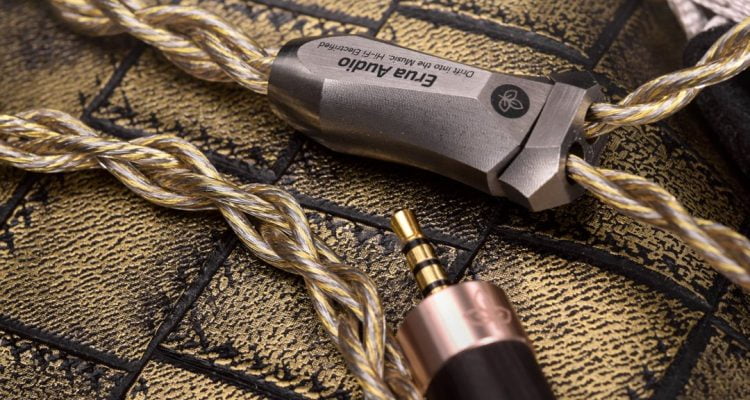 Erua Audio Tawa Review: Skillfully balanced
Erua Audio Tawa Review: Skillfully balanced
Erua Audio is a new in-ear/headphone cable brand powered by Aure – a Taiwanese UIEM/CIEM manufacturer. While the recognition that Aure established must have helped Erua Audio to sail on with more ease, it’s still no easy task to take the high ground in this intense competition dominated by the big brands – one example being Han Sound Audio, a renowned Taiwanese cable brand that is popular in various regions. Despite all that, Erua Audio seemed to pull off with a good start and gather positive feedback from communities. Today, the spotlight of the review will be Erua’s flagship model, Tawa. Let us now find out how this new flagship cable performs and competes with renowned brands.
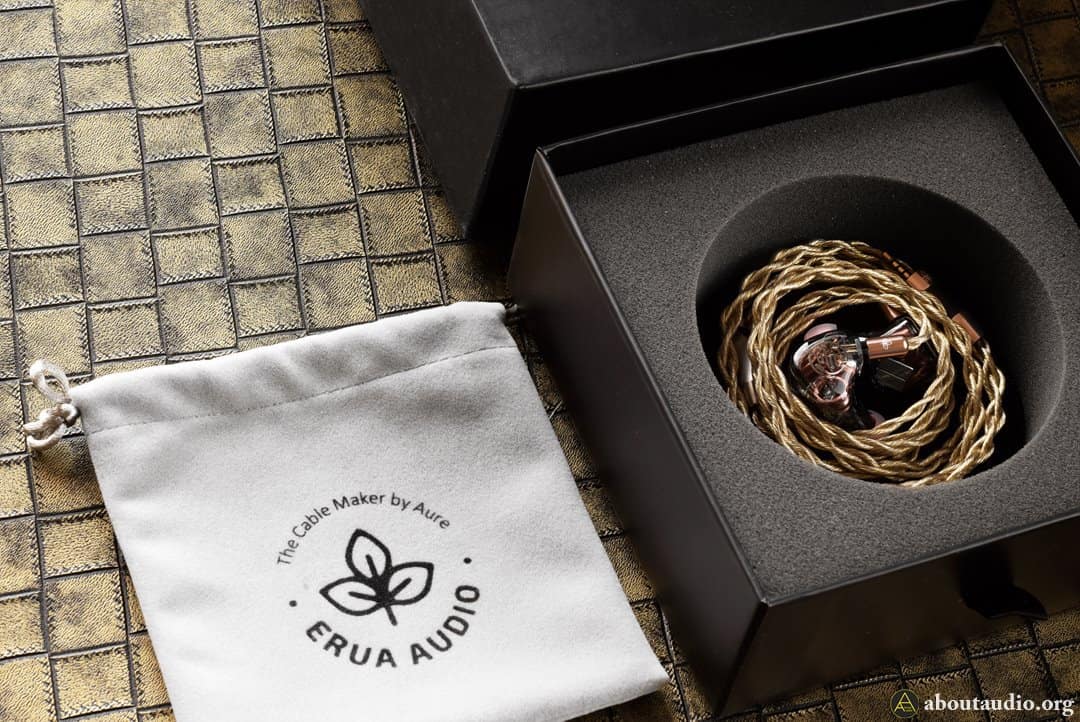
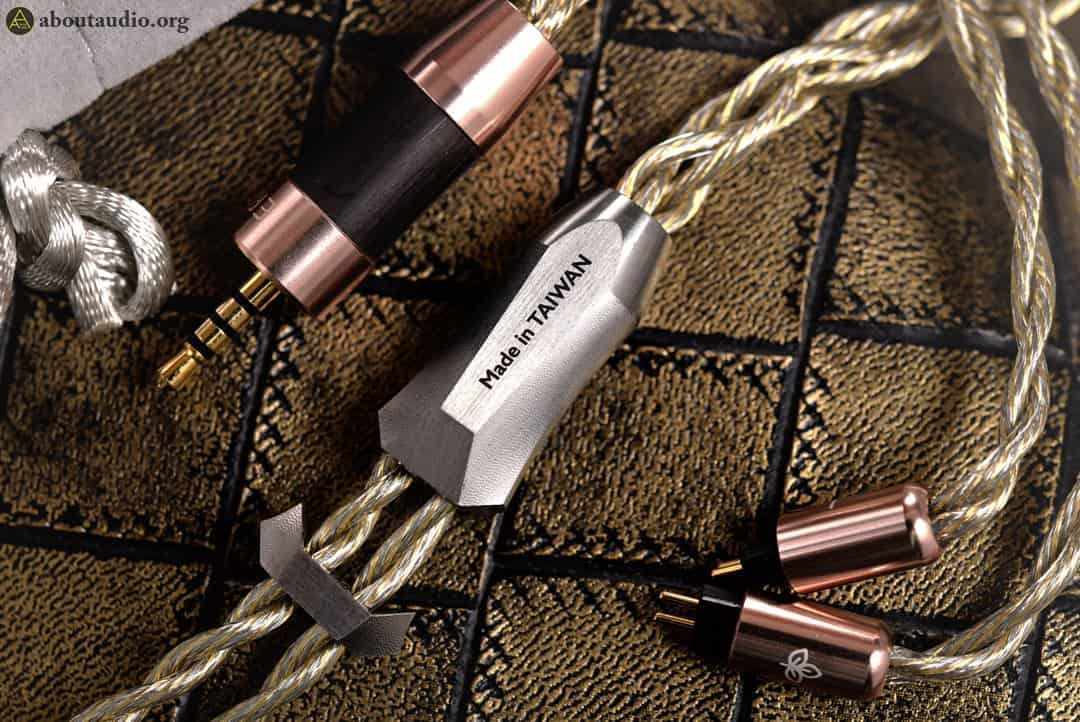 Packaging
Packaging
Tawa comes with a simple, casual box. A silvery Erua logo is printed on the top with a foam cushion on the inside with the cable and a soft storage pouch. The packaging presentation is rather plain for a flagship cable. But then again, I wouldn’t stress too much on it considering that this is their first time launching their cables – and since the sound itself was very satisfactory. We’ll be covering all the details sound-wise, so let’s first go through the features and general characteristics of Tawa.
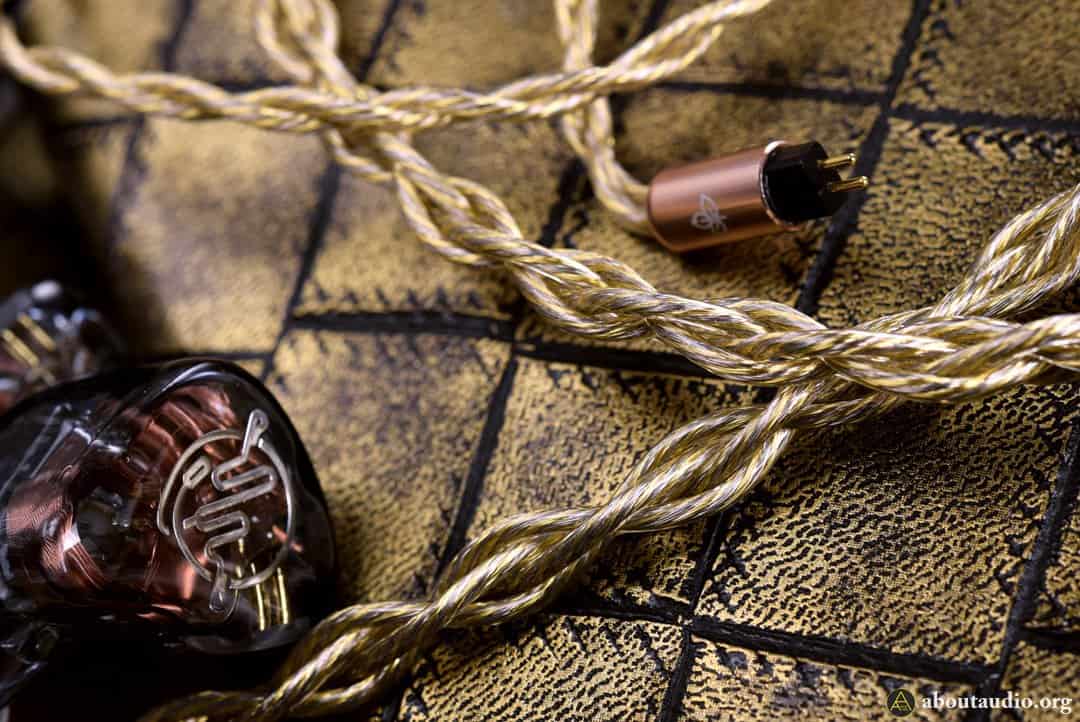 Aesthetics/Details
Aesthetics/Details
Tawa is comprised of a tribrid combination of Gold-plated Silver and Palladium-plated Silver. It’s formed in a Type 6 Litz structure which ensures strong insulation and protects the wires from oxidation. Not only that, Tawa is aesthetically beautiful that it well suits the flagship title, having to show a sparkly, golden look. Erua’s SuperFlex outer sleeves are highly transparent that allows these rich-looking wires to be displayed clearly. The sleeves are also smooth and polished, barely causing any microphonics. The wires themselves are also pliable, soft, and light enough, making it possible to wear them over the ear without additional earguides installed.
The design of the components is also worth the attention. All metal components are custom-made and proprietary to Erua Audio. For Tawa, the pin connectors and plugs are made of rose gold aluminum and printed with Erua logos. As for the plug, Erua Audio installed ebony wood in the middle of it, giving a unique look compared to the common carbon-fiber design or plain metal. They’ve gone artistic for designing the splitters too. Using pure titanium for lightweight and durability, both the splitter and slider are machined into polygonal shapes. This is somewhat similar to what Effect Audio has done for their flagship cable Code 51, though a lot more angles and curves going on. These components are quite lighter than expected and really give a good finish to the looks.
 General Sound Characteristics – 1/2
General Sound Characteristics – 1/2
Now, first off the bat – it is clear that Tawa is a highly balanced, neutral-sounding cable. The bass quantity stays almost identical as before yet everything else simply turns out to be next-level quality. I suppose the quantity does gain some alteration as one of Tawa’s boldest features is found from the ultra-lows. Tawa would bring out deep, thick, and weighty ultra-lows to a remarkable extent without causing any boomy effect to the IEM. It’s pretty impressive that Tawa pulls out grand bass presence and thick harmonics while not changing the IEM’s intended sound signature.
For mids, the density increases as well as the color of thickness. Vocals gain a fuller, tighter body that makes them shine clearer in the music. The color of the tone stays neutral which stays nearly identical, though it does gain a glimpse of smooth and rich touch-up. Its neutrality keeps the IEM from sounding neither damp nor dry, allowing both smoothness and texture exposure. Tawa very much resembles Eletech Illiad in terms of keeping the sound strictly neutral and seeking improvements in aspects of quality.
Alongside, another minor characteristic of Tawa is the mild shininess found in the vocals. While Tawa keeps the tone and brightness very original, a subtle openness can be found from the upper mids area. It doesn’t feel to be the vocals that are gaining a boost in brightness but more to the background or headroom. It’s a small change that doesn’t change the nuance of the sound but definitely gives more airiness to the upper ends. These subtle yet noticeable alterations must be challenging to make yet it’s well-executed in this cable. Anyhow, not only does this element make the upper ends have smoother sways, but it also makes the spacing between the lows and mids more spacey. This isn’t enough to make the imaging get any worse, of course – but makes the sound more lively.
 General Sound Characteristics – 2/2
General Sound Characteristics – 2/2
Highs gain a pleasant freshness to the tone along with textures that are tighter and crispier. Despite all that, the surface doesn’t feel any rough or pointy – it’s smooth and nicely polished after all. Another significant change is that the treble strikes are a lot more elastic and weighty. It offers more chewing to the bite that makes the instruments strike with more taste and flavor. Lastly, the treble separation gets noticeably better, allowing the instruments to pop out clearer in the music – but without disrupting the overall harmony. Quantity-wise, Tawa keeps the treble just as before (same goes for brightness and timbre).
As said from the previous section, lows and mids gain more space in between them, leading to a larger headroom. A similar situation goes along with the mids and highs as well. So all three bands gain some sense of extra room in between them, making each band to be divided even clearer as well as considerably expanding the soundstage. But then again, Tawa has a highly balanced sound signature. Therefore, such spacing is done adequately and naturally enough that it doesn’t cut off the sound flow. The spatial aspect of the sound also benefits from this, allowing better back-and-forth detailing.
 Sound impressions – Paired with 64 Audio Tia Fourté
Sound impressions – Paired with 64 Audio Tia Fourté
Although Tia Fourté’s stock cable matches well with the IEM, there’s no doubt that this IEM could use a better cable to bring out its full potential. Though Tia Fourté’s unique tuning has been making things unexpectedly difficult for finding the right cable that gives out a good match. Well, Tawa is one of the lesser cables that result in a nice match for this tricky IEM. First off, the overall tone of the sound gets calmer and better stabilized than before. While I haven’t acknowledged before, doing an A/B test between the stock cable and Tawa makes the difference evident; the stock cable sounds lighter and larkish whereas Tawa gently and carefully suppresses both the tone and low-ends. This does not degrade the clarity nor the upper ends, which is indeed desirable.
I’ve found most cables to alter the sound of Tia Fourté a bit too much, though the fact that Tawa handles this IEM well once again proves its omnivorous nature. Tia Fourté took a rather delicate approach for the bass (which 64 Audio now released Tia Fourté Noir to satisfy those who seek a bassier sound) and Tawa supplements the bass quite a lot. Although not changed drastically, the deep, dark bass extension and presence are now better presented from Tia Fourté.
 Sound impressions – Paired with Rhapsodio Infinity II
Sound impressions – Paired with Rhapsodio Infinity II
Now, this… this is a combo that I particularly enjoy. As Rhapsodio’s unprecedented full-BA flagship IEM, Infinity II comes with Rhapsodio Hybrid II as the stock cable. Even still, I continuously had the thought that there must be a cable that matches this IEM even better. The stock cable made the sound more elevated than what I’d like. First, the low-end builds a thicker and stronger body, offering a better “establishment” for the upper ends to stand on. It also achieves deeper and thicker ultra-low extension. As Tawa doesn’t artificially boost the bass quantity, Infinity II’s fast and solid bass is just as tight as before.
The lower mids also gain the same effect as the lows, which significantly improves the stability of the overall sound – as if adjusting the center of gravity to the lower side. Hence vocals gain a fuller body with a richer presence. It doesn’t feel like Tawa is adding fat or flesh to the sound but giving Infinity II a tight, healthy bulk-up. I’m especially pleased with this outcome as I was hoping for a meatier, fuller mids while listening to the default setting.
Other than the above, the tonality also gains a positive change. The tone is now a lot more natural and organic (as I personally found matching Rhapsodio Hybrid II to Infinity II to be less ideal). Highs now spread out even finer, smoother, and flexible. Resuming back to the default setting sure makes the trebles stiffer than matching with Tawa. The treble textures are now moist and fit my preference of sounding “natural and fresh”. The splashes from the treble also spread a bit wider and smoother which benefits the headroom. Though as for the headroom, the lower area definitely benefits a whole lot more.
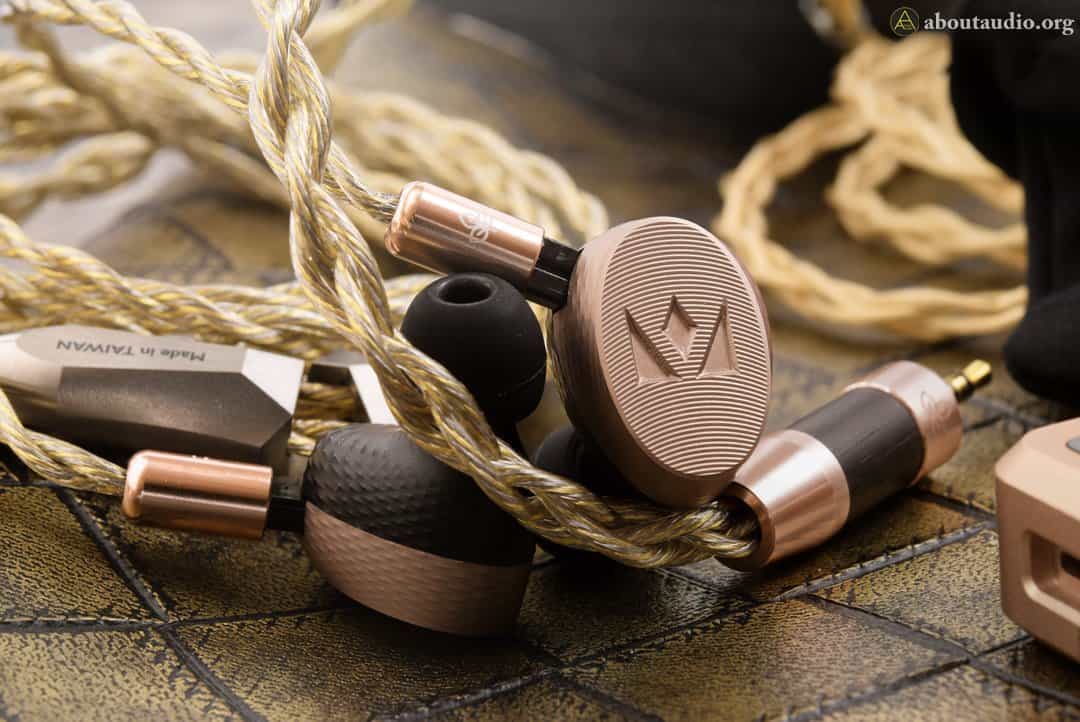 Sound impressions – Paired with Noble Audio Katana
Sound impressions – Paired with Noble Audio Katana
The sound gets noticeably deeper in-depth with a bolder body on the low-ends. Similar to the previous comparison, Tawa barely touches the quantity aspect of the sound, so the bass doesn’t get any muddy or loosen. Thanks to that, the low-end atmosphere stays equally clean and neat except that the growling-like vibrations and details from the ultra lows are now prominent. These are the major elements that build up Katana’s bass environment, which gives me an impression that Tawa is unveiling the hidden potential of the IEM rather than bringing in external alterations.
This, I find it to be a very classy way to improve the bass performance. There is a number of premium cables that manage to bring out just as prominent and deep bass – yet barely any of them manage to keep the bass quantity as original as Tawa. Mids sound more homogeneous in presentation as if being played from a single driver. Not in a sense of feeling clogged but in a sense of the BAs feeling more consistent and coherent in sounding. Those solid, BA-ish bass is just as before but now just heavier with richer ultra lows.
 Compared to Han Sound Audio Torfa
Compared to Han Sound Audio Torfa
If talking about Taiwanese cable brands, Han Sound Audio would be the face of the whole scene. Let us see how Tawa stands against Han Sound Audio’s popular tribrid cable, Torfa. First off, Torfa has a pitch-black back tone while Tawa is a little lesser – but still remains on the darker side. Torfa sets off a lush and majestic tonality with a more spatial vocal presentation. The body of the vocals is also a bit fuller and thicker.
On the other hand, Tawa touches more on the smooth flow and texture of the sound, overall taking a gentler and delicate approach in sonic reinforcement. The overall tone of the sound is slightly brighter along with vocals that take a bit closer approach – but by a small margin. As for the bass, Torfa aims for making the bass ooze out great depth and thickness while Tawa focuses on tight bass kicks and slams. In all, in short, Torfa focuses on the immersive-ness, stage expansion, lush tonality, and headroom that gets extra spatial. For Tawa, the big picture is somewhat similar in the sense that it sports lushness and space expansion. However, Tawa takes a more subtle, brighter approach with lesser boosting in reverbs & bass. These two cables are indeed well made and quite similar in some ways, yet the above differences should be evident enough to make each user chose according to their needs and preferences.
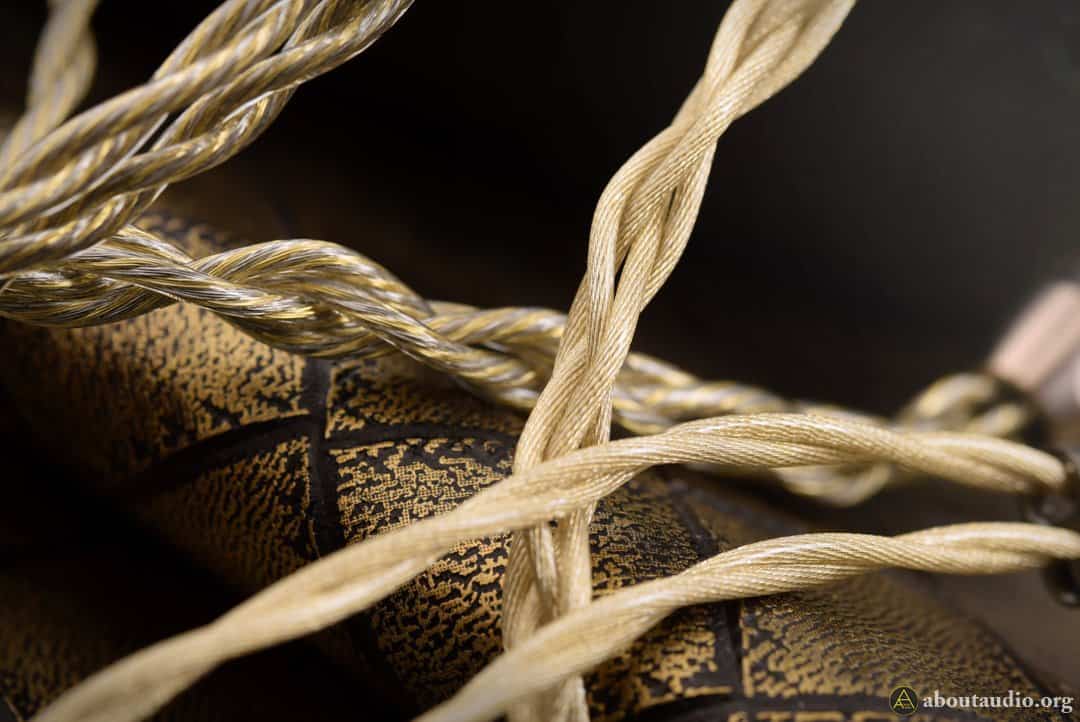 Compared to Satin Audio Zeus
Compared to Satin Audio Zeus
Of course, we have to pull out the powerful fast-growing cable brand from Vietnam, Satin Audio. Zeus is also a tribrid cable that is set as their flagship model which would be a perfect candidate for putting up for comparisons with Tawa. As both cables very much well respect the IEM’s original tuning, they all bring on the improvement in the way that builds up from the original sound rather than altering the sound signature of the IEM. Similar to the prior comparison, Zeus is a bit darker in the background while Tawa is still on the darker side as well.
In terms of texture, Zeus exposes the details with finesse but with more smoothness and creaminess going on to the surface. Also, the center of mass is quite on the lower end which adds the IEM extra stability in the way how it sounds. Meanwhile, Tawa achieves a higher altitude which gives more room for the treble details to mingle. The sound also feels more delicate in approach, adding a soft sway to the sound flow. Tawa delivers a similar quality of texture density and weight but in a more reference-like, neutral attitude. Thanks to that, the upper-ends for Tawa are a bit more airy and open-ended. It’s quite apparent that Zeus takes masculine characteristics and more feminine characteristics for Tawa. For the sound stage, Zeus highlights sideways and depth while Tawa adequately and subtly highlights all four directions but with a mildly stronger emphasis on the upper altitude.
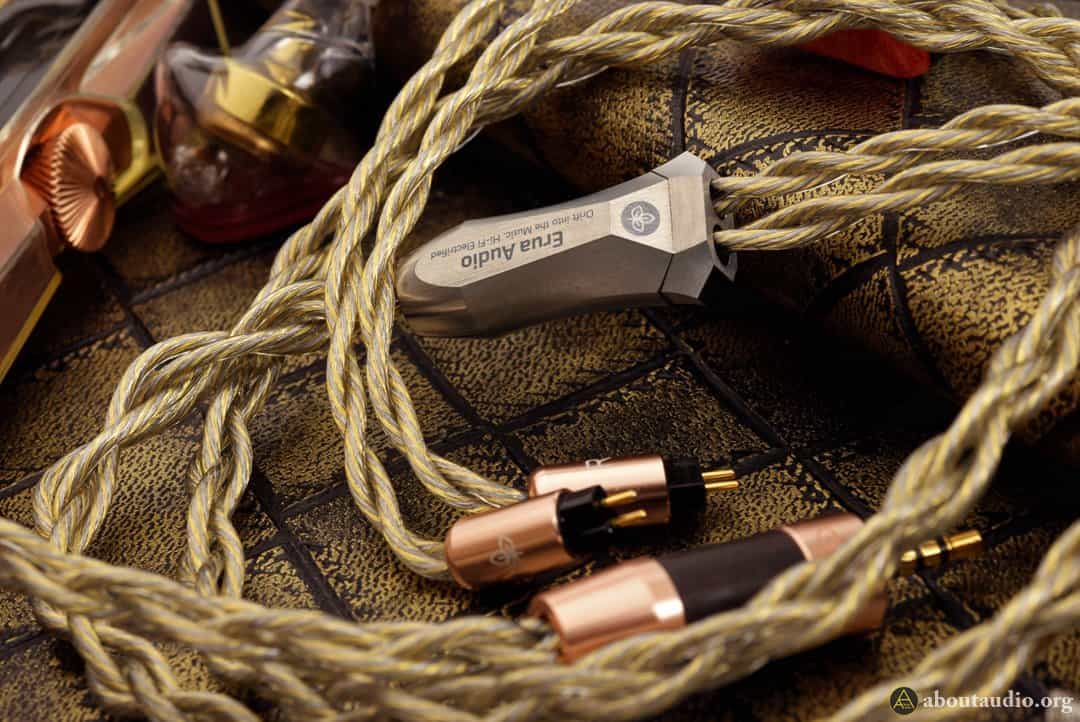 Verdicts
Verdicts
Tawa is a finely-tuned cable that brings dramatic changes and improvements in the most clever and skillful way. It seamlessly enriches the harmonics, liveliness, and openness of the music as well as building up the timbre and texture density. Tawa’s particular upper-end opening must have to be one of the most naturally done examples from premium level cables I’ve tested lately. This improvement also leads to the vocals offering finer, stronger details. The fact that Tawa is capable of carrying out significant detail and richness while not diminishing the original sound balance indeed proves itself to be deserving the flagship title. Needless to say, this is a powerful start for Erua Audio’s first journey in the audio cable market, despite the strong competitors already at the scene. If you’d like to treat your IEM with a tribrid cable that sounds cleaner than a single-material cable… Tawa is here for you!
Thanks to Erua Audio for providing Tawa in exchange for an honest impression/feedback.
I am not affiliated with Erua Audio and none of my words were modded or asked to be changed.


